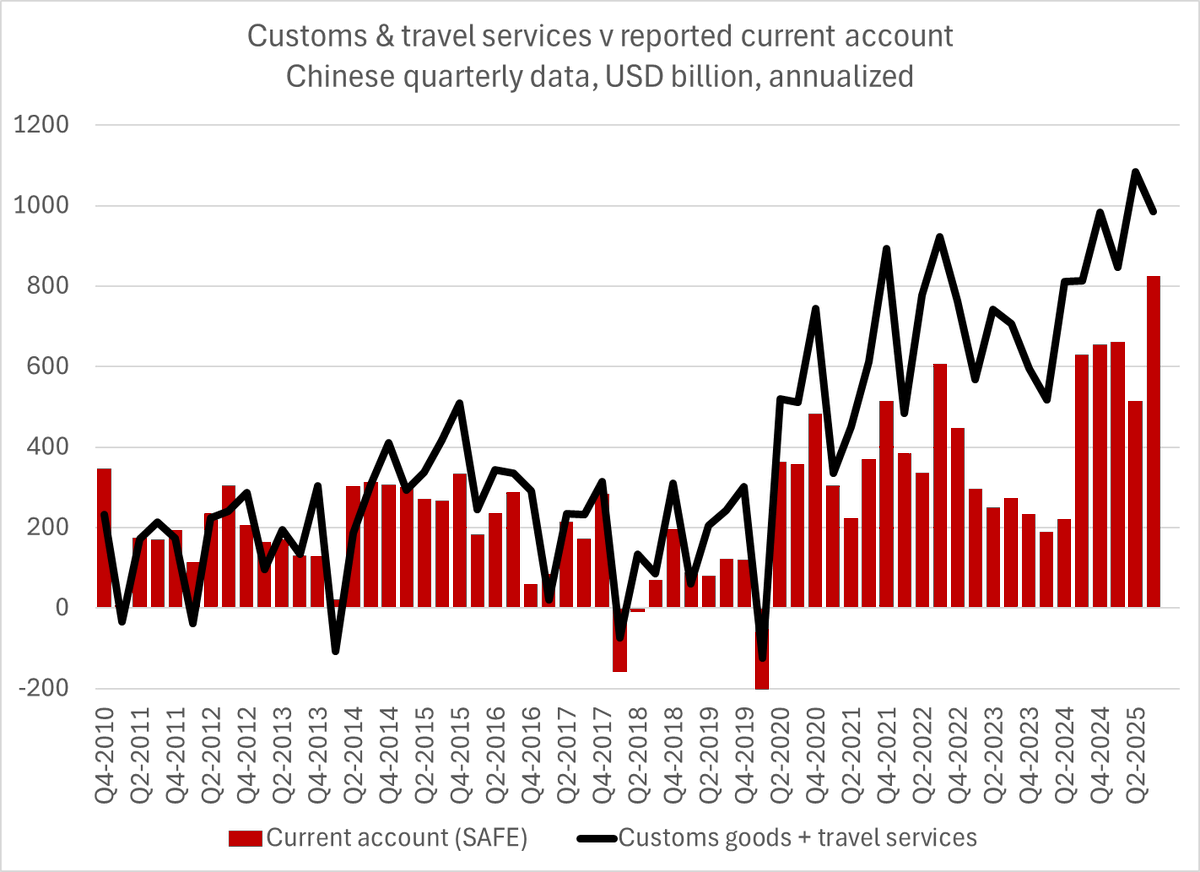Germany needs to fully wake up (it is happening but too slowly)
China's auto export growth did not slow in October.
825K vehicle exports (an annualized pace of close to 10m), likely over 700K passenger car exports (8.5m annualized). Crazy numbers
1/
China's auto export growth did not slow in October.
825K vehicle exports (an annualized pace of close to 10m), likely over 700K passenger car exports (8.5m annualized). Crazy numbers
1/

Overall export growth slowed in October, but auto exports were surprisingly strong (2024 forecasts that China's export book was set to fizzle out haven't been born out, export growth actually reaccelerated)
The vehicle surplus now exceeds $100b
2/
The vehicle surplus now exceeds $100b
2/

The acceleration in exports is clearest in volume terms, but it shows in dollar terms as well -- and imports are being pushed out of the Chinese market (auto imports are now less than 2% of Chinese domestic sales ... )
3/
3/

I had to extrapolate a bit to get an estimate for October, but it sure looks like NEV exports are heading toward 4m a year -- a big sum (for comparison, Tesla's global production ins less than 2m I think, including 1m in China)
5/
5/

The magnitude of the swing in auto trade over the last 5ys is mind boggling -- and it isn't over ...
Don't see how policy makers in the big auto producing regions of the world can sit still
6/6
Don't see how policy makers in the big auto producing regions of the world can sit still
6/6

• • •
Missing some Tweet in this thread? You can try to
force a refresh


















